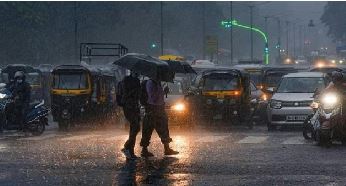After experiencing a weak monsoon in August, Mumbai is poised to receive moderate rainfall starting this week, as predicted by the India Meteorological Department (IMD). Thane and Raigad districts are under a yellow alert from September 7 to 8, while Ratnagiri has had a yellow alert since Monday, signaling the potential for heavy rain in isolated areas throughout the week.
Sushma Nair of IMD Mumbai stated, “In the coming days, the city can expect some rainfall activity. While the intensity won’t be high, the city may get some relief from the dry spell experienced in August.”
Meteorologists attribute this change to a convergence of two weather systems. Mahesh Palawat from Skymet Weather Services explained that a low-pressure system developing over the northwest Bay of Bengal, traveling to Madhya Pradesh and adjoining Vidharba, along with a cyclonic circulation over interior north Karnataka, will result in heavy rainfall in parts of Vidharbha, Marathwada, and Madhya Maharashtra. Palawat added, “Owing to these factors, westerly winds will strengthen, bringing increased rainfall to Mumbai and nearby coastal areas. While the intensity won’t match other regions of the state, Mumbai and neighboring districts will experience intermittent heavy rainfall throughout the week.”
Although the IMD forecasts moderate showers in the days ahead, recent records showed minimal rainfall. In the 24 hours ending Monday morning, Santacruz weather station recorded 0.2 mm of rain, while the Colaba observatory received 6 mm.
After July’s significant rainfall, August marked the driest period since 2015, with just 176.8 mm of rain, approximately 31 percent of the monthly average of 566.4 mm. Civic officials emphasize that substantial September rain is essential for lake levels to reach capacity, as insufficient levels could lead to year-round water shortages until the next monsoon. A review meeting on October 1 will assess the lake levels and determine water management strategies if they fall below capacity, according to Purshottam Malvade, a senior civic official.

















